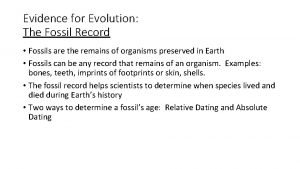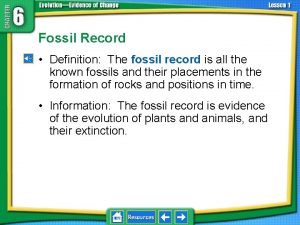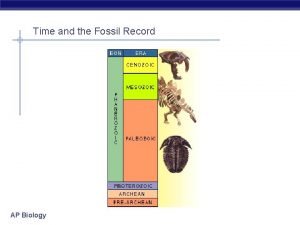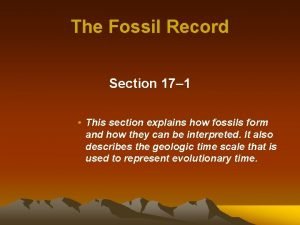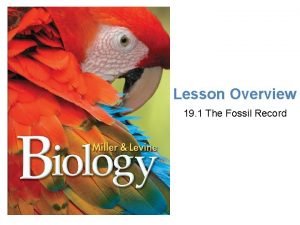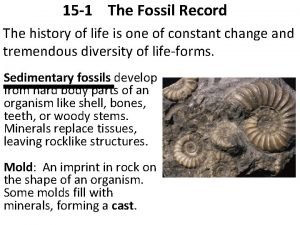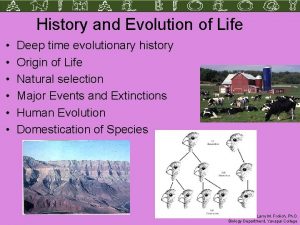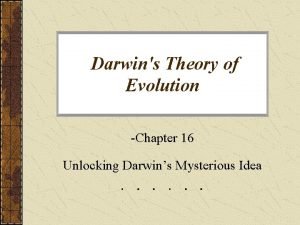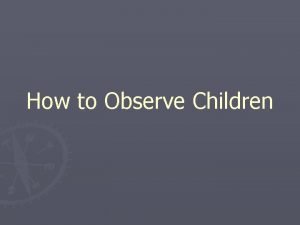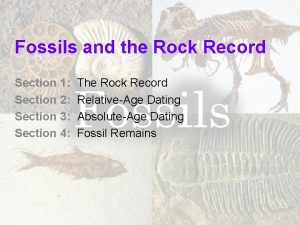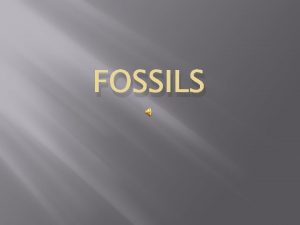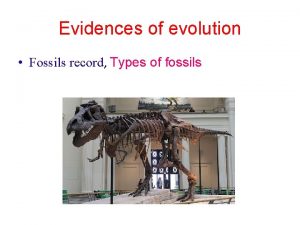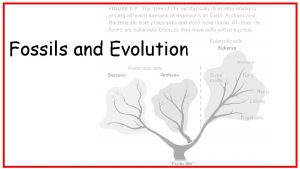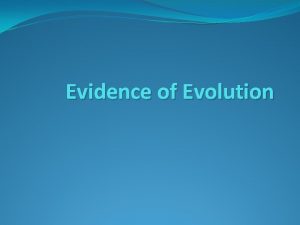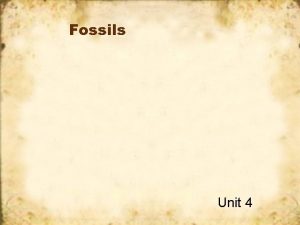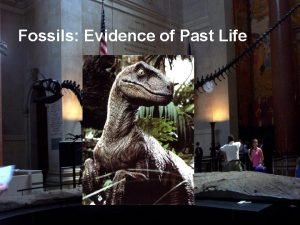6 1 Fossils and Evolution Fossil Record Definition











- Slides: 11

6. 1 Fossils and Evolution Fossil Record • Definition: The fossil record is all the known fossils and their placements in the formation of rocks and positions in time. • Information: The fossil record is evidence of the evolution of plants and animals, and their extinction.

6. 1 Fossils and Evolution Fossil record (cont. ) • Why are there gaps in the fossil record? – Decay before fossilization – Geological process destroy fossils – They are undiscovered How can fossil and rock data determine when an organism lived?

6. 2 Biological Evidence Homologous Structures • DEFINITION: Parts of organisms that are similar in origin and structure are called homologous structures. • INFORMATION: – Are the result of evolution – Can indicate how closely two or more species share common ancestors

Homologous Structures • EXAMPLES: At some point in our pasts, humans, frogs, bats, birds, and cats all shared a common ancestor, because the bones in the upper limbs are homologous.

6. 2 Biological Evidence Homologous Structures (cont. ) The bones in the upper limbs of these animals are homologous structures.

6. 2 Biological Evidence Analogous Structures • DEFINTION: Analogous structures appear similar, but have different ancestral origins. • INFORMATION: Result from similar environmental conditions that produced similar natural selection outcomes • EXAMPLE: The wings of birds and insects.

6. 2 Biological Evidence Vestigial Structures • DEFINTION: structures that have no function in their present-day form. • INFORMATION: Scientists hypothesize that the structures once functioned in an ancestor.

Vestigial Structures • EXAMPLES: – Pelvic bones in whales – Wings in ostriches – Pelvic spurs in boas and phythons – Eyes in cavefish – Tail bones in humans

6. 2 Biological Evidence Embryology • DEFINTION: The science of the development of embryos from fertilization to birth is embryology. • INFORMATION: The more closely related species are, the more features they share during development. • EXAMPLES: Fish, reptiles, birds, and human embryos

6. 3 Evolution and Plate Tectonics Geographic Isolation • Definition: Geographic isolation occurs when populations of species are separated by a physical barrier. • Information: Leads to closely related species that appear different. • Examples: – Salamanders in California and Oregon – Squirrels in the Grand Canyon

6. 3 Evolution and Plate Tectonics Convergent Evolution • Definition: Convergent evolution results in structural and functional similarities. • Information: Sometimes distant locations with similar environmental conditions have species with similar traits that evolved independently. • Examples: Catci and Euphorbia
